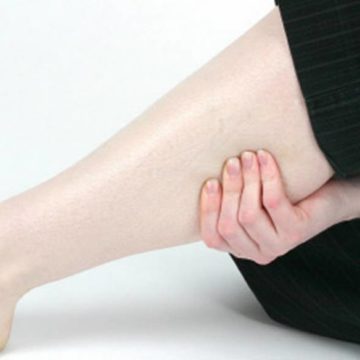
-
- Healthy blood flow is essential to one’s health to prevent a slew of health problems.
- When poor blood flow occurs, it means some parts of the body are not getting enough blood.
- Common symptoms include numbness on the legs and hands, brittle toenails, hair loss on the legs, dry skin and many more.
The importance of good blood flow

Circulation is the process by which the circulatory system, composed of the heart and about 60,000 miles of blood vessels, carries blood to every corner of your body. As the blood circulates, it delivers nutrients and oxygen to the body’s cells and helps flush out the waste products.
Good circulation is crucial to a person’s health. So, when circulation is regularly poor, you will likely face various issues as a result of blood not flowing efficiently through your system, thus, one or more parts of the body are not getting adequate blood flow.
Signs of Poor Blood Flow

At some point, we have all dealt with poor blood circulation. Common symptoms include:
- Numb or cold hands or feet
- A pale blue tinge on the legs for light-skinned people
- Dry skin on the feet
- Brittle nails
- Hair loss on the feet and legs
- Erectile dysfunction
- Slower healing of wounds among diabetics
Tips To Improve Circulation
1. Stop smoking tobacco

Nicotine, the active ingredient in tobacco products, causes your blood vessels to narrow, limiting the amount of blood that flows to your organs. Quit now if you smoke. If you have trouble sticking with it, talk to your doctor about things that may help you quit.
2. Manage your blood pressure

Aim for 120 over 80 or less. Ask your doctor about the best readings for your age and health. Make it a point to check your blood pressure at least once a month. If it’s very high, it can cause arteriosclerosis, a condition caused by hardened arteries and can reduce blood flow.
3. Hydrate often

Water helps keep things flowing throughout the body including getting rid of toxins from the body. Aim for 8 glasses of water each day, and more if you exercise or during high temperatures.
4. Avoid prolonged sitting

Sitting at a desk in the same position for hours won’t do your back and circulation any good. Leg muscles are weakened due to lack of movement, causing circulation to slow down, resulting in numbness, tingling, and in some cases, may form a clot. Getting on your feet works the valves in your leg veins, encouraging blood flow up to the heart.
5. Elevate your legs

The legs-up-the-wall pose in yoga promotes better blood circulation and reduces swelling in the legs.
Lie on the floor with your left or right shoulder near the wall. Turn your body towards the wall so you can put your feet up and move your bottom against the wall. For balance, stretch your arms out on the floor with palms facing downwards.
6. Get your blood pumping with exercise

Aerobic exercises such as walking, running, biking, swimming and many more, are particularly good for heart health thus improving circulation. Aim for 30 minutes of exercise 5 to 7 days a week. For walking, moderate to intense speeds of at least 3 miles an hour provide the best benefits.
7. Wear compression socks

Compression socks slightly squeeze your legs so your blood moves back to your heart instead of hanging around too long. Ask help from your doctor with regards to the length and amount of pressure for you.
8. Eat a balanced diet

Eat lots of fruits and vegetables and stay away from saturated fats found in red meat and other animal sources. Avoid too much salt to keep your cholesterol and blood sugar controlled and your arteries clear.
9. Dry brush your skin

Besides boosting circulation, it removes dead skin as well. Using a body brush with stiff, fat bristles, stroke using long motions starting with your feet going up. Make circles on your belly and lower back. Do it daily before showering.
Source: WebMD
